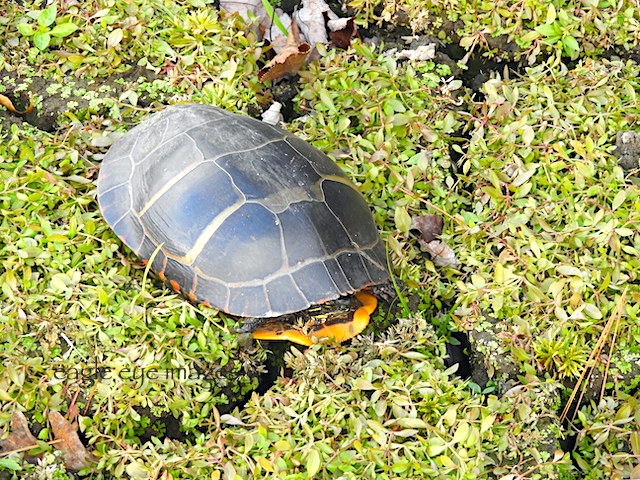Safe Travels...A Rough Story
You all know that I took on the responsibility of monitoring a local Osprey nest about a month ago. Visiting the nest is just part of the role as I have found, over the years of monitoring Bald Eagles' nests, that getting to know the locals and sharing information with them is beneficial...beneficial to them, beneficial to the nest and beneficial to me as well.
About ten days ago in speaking with a few of the water works guys, they mentioned another nest. When Jim told me about it, I said, "I'm so glad you told me because first of all it's right by my house and secondly, on and off all Summer, I thought I saw something up there but thought I was seeing things. I'll scope it out on my way home. Thanks!" (Note to self: leave the binoculars in my car).

Unfortunately, when I did stop there I wasn't pleased with the outcome. Yes, there was a nest on top of the cell tower but in the nest, I thought I saw what appeared to be a dead bird. Going home to get my larger lens and returning right away confirmed my suspicions. It was definitely a dead bird...an adult Osprey.
The next step was to report the precise GPS co-ordinates of the nest along with what I'd discovered. The woman in charge of the Osprey Nation Project was of course just as distraught as I was, although she was glad to put another nest on the map. Telling her I'd researched the owner of the cell tower, she was more than grateful for the info and pix.
This week, I swung by there (since it's on my way home) and from a distance thought I saw something on the outer structure to the left of the nest. Perhaps a scavenger, I thought. But I was wrong. As I got closer, the outline of the bird was distinct. Looking through the binoculars and then my lens, I was heartbroken to see the distinctive white head with it's dark brown crown and brown streak on the cheek. It was a young Osprey...perhaps this year's fledgling...now on it's own. Watching for over 30 minutes, it would occasionally look in the direction of the nest then over it's shoulder at the river behind it. I knew that it's instinct to migrate South would soon take over.
About ten days ago in speaking with a few of the water works guys, they mentioned another nest. When Jim told me about it, I said, "I'm so glad you told me because first of all it's right by my house and secondly, on and off all Summer, I thought I saw something up there but thought I was seeing things. I'll scope it out on my way home. Thanks!" (Note to self: leave the binoculars in my car).
Unfortunately, when I did stop there I wasn't pleased with the outcome. Yes, there was a nest on top of the cell tower but in the nest, I thought I saw what appeared to be a dead bird. Going home to get my larger lens and returning right away confirmed my suspicions. It was definitely a dead bird...an adult Osprey.
The next step was to report the precise GPS co-ordinates of the nest along with what I'd discovered. The woman in charge of the Osprey Nation Project was of course just as distraught as I was, although she was glad to put another nest on the map. Telling her I'd researched the owner of the cell tower, she was more than grateful for the info and pix.
This week, I swung by there (since it's on my way home) and from a distance thought I saw something on the outer structure to the left of the nest. Perhaps a scavenger, I thought. But I was wrong. As I got closer, the outline of the bird was distinct. Looking through the binoculars and then my lens, I was heartbroken to see the distinctive white head with it's dark brown crown and brown streak on the cheek. It was a young Osprey...perhaps this year's fledgling...now on it's own. Watching for over 30 minutes, it would occasionally look in the direction of the nest then over it's shoulder at the river behind it. I knew that it's instinct to migrate South would soon take over.
just seeing, saying, and sharing...
Safe Travels
with you and those at
Natures Notes 2
Wild Bird Wednesday
The Bird D'Pot
FYI: Young Osprey fledge at 7-8 weeks of age. Two weeks after they fledge, they follow the adult male on it's fishing trips to learn the skill. Migrating before juveniles, adult Ospreys head to Central and South America for the Winter. After being with their parents for about two months, the juveniles will remain at their wintering grounds two to three years before returning north to breed.
Wild Bird Wednesday
The Bird D'Pot
FYI: Young Osprey fledge at 7-8 weeks of age. Two weeks after they fledge, they follow the adult male on it's fishing trips to learn the skill. Migrating before juveniles, adult Ospreys head to Central and South America for the Winter. After being with their parents for about two months, the juveniles will remain at their wintering grounds two to three years before returning north to breed.


Comments